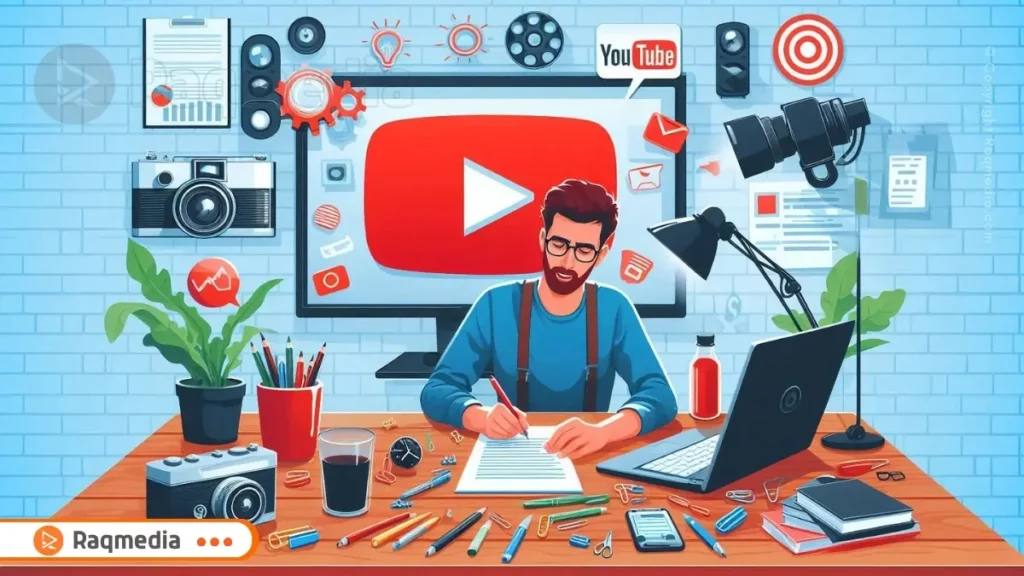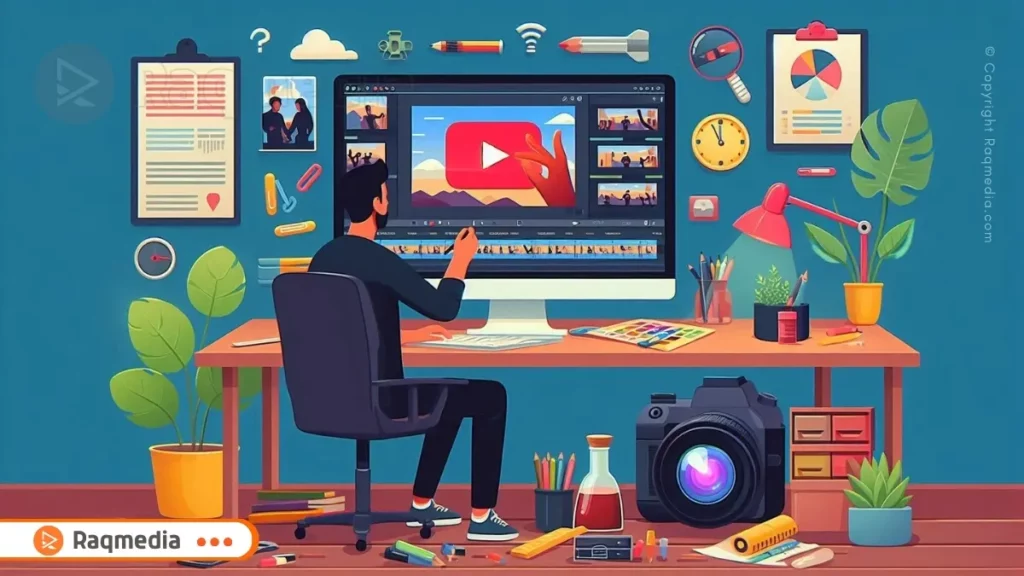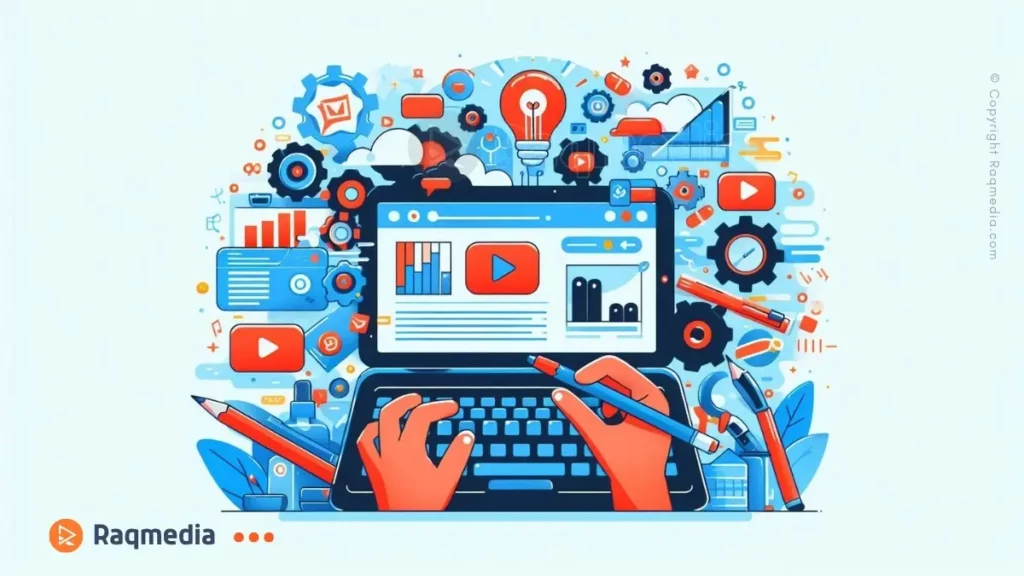Stepping into the realm of video scriptwriting is akin to embarking on a journey where words alone don't suffice – a world where visual cues reign supreme in seamlessly weaving narratives that captivate audiences. In the ever-evolving landscape of content creation, the power of storytelling extends beyond dialogue; it transcends into a realm where visuals breathe life into words, imprinting lasting impressions on viewers. Welcome to a new frontier beyond words: the realm of visual storytelling in video scripts.
Beyond Words: Unleashing the Power of Visual Storytelling in Video Scripts
Visual cues hold an unparalleled significance in enhancing the impact and resonance of videos, creating an immersive experience that lingers long after the screen fades to black. As filmmakers, videographers, content creators, or marketing professionals, you understand that every frame tells a story—every shot portraying emotions and messages beyond mere lines of dialogue. It's within these nuances that the true essence of visual storytelling lies—the ability to evoke feelings, convey depth, and forge connections with your audience on a visceral level.

Dive deeper into this art form, for within these subtleties lie the keys to unlocking the true potential of your video scripts. Let's embark together on a transformative exploration into the world of visual cues and discover how they can elevate your storytelling prowess to new heights.
Understanding Visual Storytelling in Video Scripts
Visual storytelling plays a crucial role in video scripts by enhancing the emotional impact and narrative depth of content. When visuals are strategically integrated into scripts, they have the power to evoke feelings, convey complex messages, and captivate audiences on a profound level. By tapping into the visual senses of viewers, content creators can create a lasting impression that goes beyond mere words. For instance, in a short film about resilience, showing a protagonist's struggle through visual cues like rain pouring outside a window can effectively communicate themes of perseverance and overcoming obstacles without explicitly stating them.
Incorporating visual elements is vital for engaging viewers and ensuring that the content remains memorable long after they've watched it. Vivid imagery, compelling graphics, and well-thought-out scenes not only capture attention but also facilitate better retention of the message being delivered. Through visual storytelling techniques such as dynamic camera angles, color schemes, and lighting choices, filmmakers can create an immersive experience that resonates with their audience. An example of this would be using contrasting colors to symbolize conflict or harmony within a scene, visually reinforcing the underlying emotions at play.
To leverage visual storytelling effectively and captivate audiences, creators should aim to strike a balance between aesthetic appeal and meaningful storytelling. One tip is to pay attention to detail in every frame or transition to ensure coherence and seamless flow throughout the video. By weaving visual cues into every aspect of their scripts thoughtfully, creators can enrich narratives while keeping viewers engaged from start to finish.
Additionally, utilizing editing techniques like match cuts or montages can help convey emotions more dynamically than dialogue alone could achieve. Balancing these elements ensures that visuals don't just complement the script but become an integral part of its storytelling fabric.
Incorporating Visual Cues for Scene Descriptions
When it comes to video scriptwriting, scene descriptions play a crucial role in setting the tone and atmosphere of a production. By incorporating visual cues into these descriptions, writers can transport viewers into the world being portrayed on screen. Detailed and vivid scene depictions not only engage the audience but also enhance their overall viewing experience by immersing them in the story. For example, instead of simply stating “a rainy night,” a more compelling scene description could be: “The rain pelted against the windowpanes like angry drumbeats, casting eerie shadows across the dimly lit room.”
Visual cues in scene descriptions should aim to evoke emotions and stimulate the imagination of the audience. By combining descriptive language with imagery that paints a picture in the viewer's mind, scriptwriters can create powerful visual narratives. Imagine describing a bustling city street as “a symphony of car horns and chattering pedestrians under a kaleidoscope of neon lights.” This level of detail not only captures the essence of the scene but also invites viewers to mentally visualize themselves within that environment.
Incorporating visual metaphors into your scripts can add depth and layers of meaning to your content. For example, if you're creating a video about innovation, instead of simply stating “innovation is key,” you could visually represent this concept by showing gears turning smoothly or a light bulb switching on. By using metaphorical imagery, you engage viewers on a subconscious level, making your message more impactful and memorable.
To craft compelling scene descriptions using imagery, it is essential to focus on sensory details that appeal to sight, sound, smell, taste, and touch. By engaging multiple senses through visual cues in scripts, creators can establish a richer narrative tapestry that resonates with viewers on a deeper level. Whether portraying tranquil landscapes or chaotic urban settings, incorporating specific visual elements helps bring scenes to life and leaves a lasting impression on audiences long after they have finished watching. Ultimately, mastering the art of infusing scene descriptions with visual cues is key to creating memorable and impactful video content.
Enhancing Transitions with Visual Elements
In video scriptwriting, the transition between scenes plays a crucial role in keeping viewers engaged and immersed in the storytelling experience. Visual transitions serve as invisible threads that seamlessly weave one scene into the next, maintaining continuity and flow throughout the narrative. Whether it's a simple cut, a fade, or a creative visual effect, each transition should be strategically chosen to enhance the overall viewing experience. By using visual elements effectively during transitions, filmmakers can elevate the storytelling process and ensure that audiences remain captivated from start to finish.
Smooth transitions are vital not only for maintaining viewer engagement but also for guiding their emotions and perceptions throughout the video. Imagine a poignant moment shifting to a flashback scene – a subtle color grading change or a dreamy blur effect can transport viewers into a different time frame while keeping them emotionally connected to the story. These visual cues help create an immersive experience that resonates deeply with the audience, making the narrative more impactful and memorable. When crafting scripts, consider how each transition can contribute to enhancing emotional resonance and thematic cohesion within your video content.

To enhance script continuity through visual elements, creators can experiment with innovative transition techniques such as match cuts, graphic matches, or object-based transitions. For instance, transitioning from a close-up shot of raindrops hitting pavement to an aerial view of city streets glistening in the rain can signal a shift in mood and setting without requiring explicit dialogue or narration. By harnessing the power of visual storytelling in transitions, filmmakers can effectively communicate shifts in time, space, emotion, or perspective, enriching their stories with layers of meaning that resonate with viewers on a profound level.
Leveraging Visual Metaphors and Symbolism in Video Scriptwriting
In the realm of video scriptwriting, visual metaphors and symbolism hold a profound ability to elevate storytelling to new heights. By incorporating symbols that resonate with the audience on a deeper level, creators can imbue their videos with layers of meaning and emotional impact. A classic example of this is the use of color symbolism – where colors like red symbolize passion or danger, while blue conveys tranquility or sadness. By strategically weaving these visual cues into scripts, filmmakers can evoke specific emotions in viewers subconsciously, enriching the viewing experience.
Visual metaphors serve as powerful tools for conveying complex ideas or themes in a concise and impactful manner. For instance, in a corporate video aiming to represent growth and innovation, the visual metaphor of a seed sprouting into a tree can symbolize progress and transformation effectively without the need for explicit dialogue. Such imagery not only simplifies communication but also adds depth to the narrative, allowing audiences to connect with the message on multiple levels beyond words.
To effectively integrate metaphors into scripts, creators must ensure coherence between visuals and the core message they intend to convey. Whether it's using recurring symbols throughout a video series to create thematic continuity or juxtaposing contradictory visuals to evoke tension and intrigue, mastering the art of visual metaphors demands thoughtful planning and creativity. When executed skillfully, visual metaphors have the potential to leave a lasting impression on viewers, fostering a sense of engagement and resonance long after the video ends.
By exploring diverse symbolic languages such as cultural references, archetypal imagery, or nature-inspired metaphors, scriptwriters can infuse their videos with added depth and nuance. These symbolic elements not only enhance visual storytelling but also spark curiosity and reflection among viewers, inviting them to actively participate in decoding the underlying messages within the narrative canvas. In essence, harnessing the power of visual metaphors and symbolism unlocks endless possibilities for creating compelling stories that transcend mere dialogue, resonating deeply with audiences on an emotional level.
Creating Visual Hooks for Audience Engagement
When it comes to capturing the attention of viewers from the outset, creating visual hooks is paramount in video scriptwriting. These visually captivating moments not only serve as an entry point into the narrative but also set the tone for what's to come. Imagine a short film that opens with a dramatic aerial shot of a bustling cityscape at night, seamlessly transitioning into a close-up of a mysterious figure standing atop a skyscraper. This powerful visual hook immediately draws audiences in, sparking curiosity and intrigue right from the start.

Establishing early visual hooks is essential for holding viewer interest throughout the video. By crafting striking visuals that resonate with the audience on an emotional level, creators can leave a lasting impression that keeps viewers engaged until the very end. Take, for example, a promotional video for a luxury watch brand that begins with slow-motion footage of intricate gears and mechanisms working seamlessly together, accompanied by evocative music. This mesmerizing visual hook not only showcases the craftsmanship behind the product but also sets the stage for a captivating story about precision and elegance.
To design visuals that truly captivate and resonate with viewers, consider incorporating elements of surprise, suspense, or beauty that evoke strong emotions. Experiment with unique angles, lighting effects, or transitions that add depth and intrigue to your storytelling. Whether it's an unexpected twist in the plot revealed through clever visual cues or a breathtaking landscape shot that transports audiences to another world, creating memorable visual hooks demands creativity, intentionality, and an understanding of your target audience's preferences and sensibilities.
In essence, mastering the art of creating visual hooks is about more than just aesthetics; it's about harnessing the power of imagery to forge connections with viewers on an emotional level. By strategically integrating visually captivating moments into your video scripts – right from the opening scenes – you can pique curiosity, evoke strong emotions, and leave a lasting impact that resonates long after the final frame fades to black.
Maximizing Impact Through Cinematic Visualization
In the realm of video scriptwriting, the art of cinematic visualization serves as a powerful tool to elevate storytelling and immerse audiences in captivating narratives. By leveraging cinematic shots, angles, and framing techniques, filmmakers can create visual masterpieces that resonate on an emotional level with viewers. Imagine a scene where a character stands silhouetted against a setting sun, symbolizing hope amidst adversity, or a slow-motion sequence capturing the raw intensity of a critical moment. These cinematic visuals not only enhance the aesthetic appeal but also add depth and emotion to the storyline.
Seamless transitions are essential for maintaining audience engagement throughout the video. Experiment with creative transition techniques like match cuts or whip pans to guide viewers' focus from one scene to another smoothly. Consider how each transition contributes to the narrative flow and enhances the overall visual experience. By paying attention to transitions, you keep viewers immersed in the story without distractions.
Employing high-angle shots to depict vulnerability or low-angle shots to convey power dynamics can subtly influence how viewers perceive characters and situations within a video narrative. Additionally, strategic use of framing techniques like close-ups for intimate moments or wide shots for expansive landscapes can evoke varied emotional responses from the audience. For instance, in a suspenseful scene, tight framing around a character's eyes can intensify feelings of fear or anticipation. Such attention to detail in cinematic visualization enriches the viewing experience by engaging multiple senses and fostering deeper connections with the story being told.
Case studies abound with examples of how cinematic visualization has transformed video content into unforgettable experiences. Consider iconic films like “The Shawshank Redemption,” where sweeping aerial shots capture the essence of freedom as the protagonist breaks free from confinement. Similarly, in music videos like Beyoncé's “Formation,” dynamic camera movements and dramatic lighting contribute to creating visually striking moments that align perfectly with the song's themes. These instances highlight how thoughtful implementation of cinematic techniques can elevate storytelling beyond words, leaving a lasting impact on audiences long after they've viewed the content.
The Art of Balancing Visuals with Dialogue
In the realm of video scriptwriting, achieving a harmonious balance between visuals and dialogue is pivotal for crafting a compelling narrative that resonates with viewers. One strategy for striking this equilibrium is to consider the emotional weight of each element. For instance, during poignant moments in a story, allowing visuals to convey the raw emotion while using sparse dialogue can heighten the impact on the audience.
Conversely, in scenes where characters engage in crucial conversations or reveal significant information, dialogue may take precedence to drive the storyline forward. By carefully calibrating when visuals or dialogue should take center stage, creators can create a dynamic interplay that enhances the overall storytelling experience.
Creating synergy between spoken words and visual elements involves aligning these components to reinforce each other's message effectively. For example, if a character expresses deep sorrow over a recent loss through dialogue, complementing this with somber music and dimly lit visuals can intensify the emotional gravity of the moment. By synchronizing visual cues with dialogues that evoke similar sentiments or themes, creators can amplify the audience's immersion in the narrative. This synchronization not only enriches storytelling but also deepens viewer engagement by appealing to multiple senses simultaneously.

Knowing when to let visuals speak louder than words or vice versa requires a nuanced understanding of storytelling dynamics. In action-packed sequences or visual montages depicting character development, harnessing powerful imagery backed by minimal dialogue can evoke strong emotions without overwhelming viewers with excessive verbal exposition. On the other hand, introspective moments or plot twists might benefit from nuanced dialogues that guide audiences through intricate plot developments while using visuals sparingly to accentuate key revelations subtly. The art lies in discerning which medium – visuals or dialogue – can convey certain nuances more effectively based on the desired impact on viewers.
By mastering the delicate dance between visuals and dialogue in video scripts, creators unlock a realm of storytelling possibilities where every frame and every word contributes seamlessly to an immersive viewing experience. Striking this balance not only elevates narratives but also underscores the importance of intentional communication through various expressive mediums. As creators navigate this creative landscape, honing their skills enables them to captivate audiences on a profound level while honoring the interconnected nature of visual storytelling and dialogue within cinematic realms.
Engaging Audiences Across Different Platforms Through Visual Storytelling
In a digital landscape saturated with content, mastering the art of visual storytelling is essential for engaging audiences across various platforms. Whether it's creating captivating social media videos, designing visually stunning websites, or delivering impactful presentations, tailoring visual cues to suit different platforms can significantly enhance audience engagement. For instance, on social media platforms like Instagram and TikTok, where attention spans are limited, using quick cuts, vibrant colors, and bold graphics can grab viewers' attention effectively. In contrast, for website videos or presentations, incorporating subtle animations, interactive visuals, and cohesive branding elements can elevate the storytelling experience.
When adapting visual storytelling for different platforms, maintaining consistency in brand aesthetics while tailoring content based on platform requirements is key. This ensures that the audience receives a consistent brand message across all channels while optimizing visuals for each specific platform's strengths. For example, a tech company aiming to showcase its innovative products may use dynamic product demos on its website to engage visitors effectively. Simultaneously, the same content can be repurposed into shorter teaser videos for social media platforms to generate buzz and drive traffic back to the main website.
Optimizing visual elements to resonate with diverse online audiences involves understanding the unique preferences and behaviors of users on each platform. For instance, when targeting a younger demographic on platforms like Snapchat or Twitch, utilizing quirky animations or incorporating meme-inspired visuals can help create relatable content that resonates with this audience segment. Meanwhile, for professional networking sites like LinkedIn or industry-specific forums, focusing on sleek designs and data-driven infographics can establish credibility and cater to more serious-minded viewers.
By strategically adapting visual storytelling techniques to fit various online platforms while maintaining brand consistency and optimizing content for different audience demographics, creators can maximize their reach and impact in today's digital age. Experimenting with different visual styles and formats across platforms allows content creators to refine their storytelling skills and tailor messages effectively to connect with diverse audiences worldwide.
Harnessing the Power of Visual Storytelling
In the realm of video scriptwriting, harnessing the power of visual storytelling is akin to unlocking a gateway to audience engagement and impact. As we journey through the diverse landscape of platforms and mediums where video content thrives, it becomes clear that visuals play a pivotal role in capturing viewer attention. By summarizing key takeaways from this exploration, creators are empowered to weave magic into their scripts through artful visual cues. Whether it's crafting compelling scenes with vivid imagery or utilizing cinematic visualization techniques to evoke emotions, the potential for creating captivating narratives knows no bounds.
The essence of well-crafted visuals lies not only in their aesthetic appeal but also in their ability to communicate messages efficiently and memorably. Consider how a simple metaphorical image can convey complex ideas with elegance or how strategic scene transitions can maintain seamless engagement throughout a video. As creators delve deeper into the art of balancing visuals with dialogue, they discover the nuanced dance between what is shown and what is said, realizing that each element has its distinct strength in driving the narrative forward.
Encouraging experimentation with different visual storytelling techniques paves the way for innovation and evolution in content creation. Just as artists experiment with colors on a palette, video creators can blend visual metaphors, symbolism, hooks, and cinematic elements to sculpt stories that resonate deeply with audiences across various platforms. Embracing this holistic approach ensures that every frame contributes meaningfully to the overarching narrative, leaving a lasting imprint on viewers' hearts and minds. In essence, by embracing the power of visual cues in video scripts, storytellers unlock endless possibilities to connect, engage, and inspire through the universal language of imagery.
To capture viewers' attention right from the start, create visually striking hooks that set the tone for your video. Whether it's an intriguing opening shot, an unexpected visual element, or a clever use of symbolism, make sure your visuals are not only aesthetically pleasing but also meaningful in relation to your message. A powerful visual hook acts as a teaser that invites audiences into your narrative world and builds anticipation for what's to come.
Embracing the Visual Journey
In the realm of video scriptwriting, visual storytelling is a formidable tool that can elevate content to new heights. By harnessing the power of visual cues, filmmakers, videographers, content creators, and marketing professionals can captivate audiences and leave a lasting impression. The fusion of visuals with words creates a dynamic synergy that resonates deeply with viewers, evoking emotions and enhancing storytelling in ways that words alone cannot achieve.
As we conclude our exploration into the world of visual cues in video scriptwriting, it's evident that the marriage of visuals and narratives has the potential to redefine how stories are told and received. By understanding how to effectively incorporate visual elements – whether through scene descriptions, transitions, metaphors, or cinematic techniques – creators can craft immersive and engaging experiences for their audience. As technology continues to evolve, embracing visual storytelling becomes not just an option but a necessity in capturing attention and fostering meaningful connections through compelling video content.
Frequently Asked Questions About Visual Storytelling in Video Scripts:
1. Why are visual cues important in video scripts?
Visual cues enhance storytelling by engaging viewers on a visceral level, making content more memorable and impactful.
2. How can I incorporate visual metaphors into my video scripts?
Visual metaphors add depth to narratives; consider using symbols or imagery that resonate with your core message to create meaning layers.
3. What platforms are suitable for leveraging visual storytelling techniques?
Visual storytelling can be adapted for various platforms like social media, websites, or presentations to engage diverse audiences effectively.
4. How do I balance visuals with dialogue in my scripts?
Striking a balance between visuals and dialogue involves ensuring both components work harmoniously to convey a cohesive story; let each element complement the other.
5. What is the key takeaway from incorporating visual cues into video scripts?
The inclusion of well-crafted visuals enhances audience engagement and enriches storytelling by conveying emotions and messages more effectively than words alone.
By following these tips and incorporating them thoughtfully into your video scriptwriting process, you can elevate the impact of your storytelling through engaging visuals that resonate with audiences across various platforms and mediums. Remember, every frame has the potential to convey a story within itself – unleash the power of visual cues to create truly impactful video content that captivates and inspires viewers.









